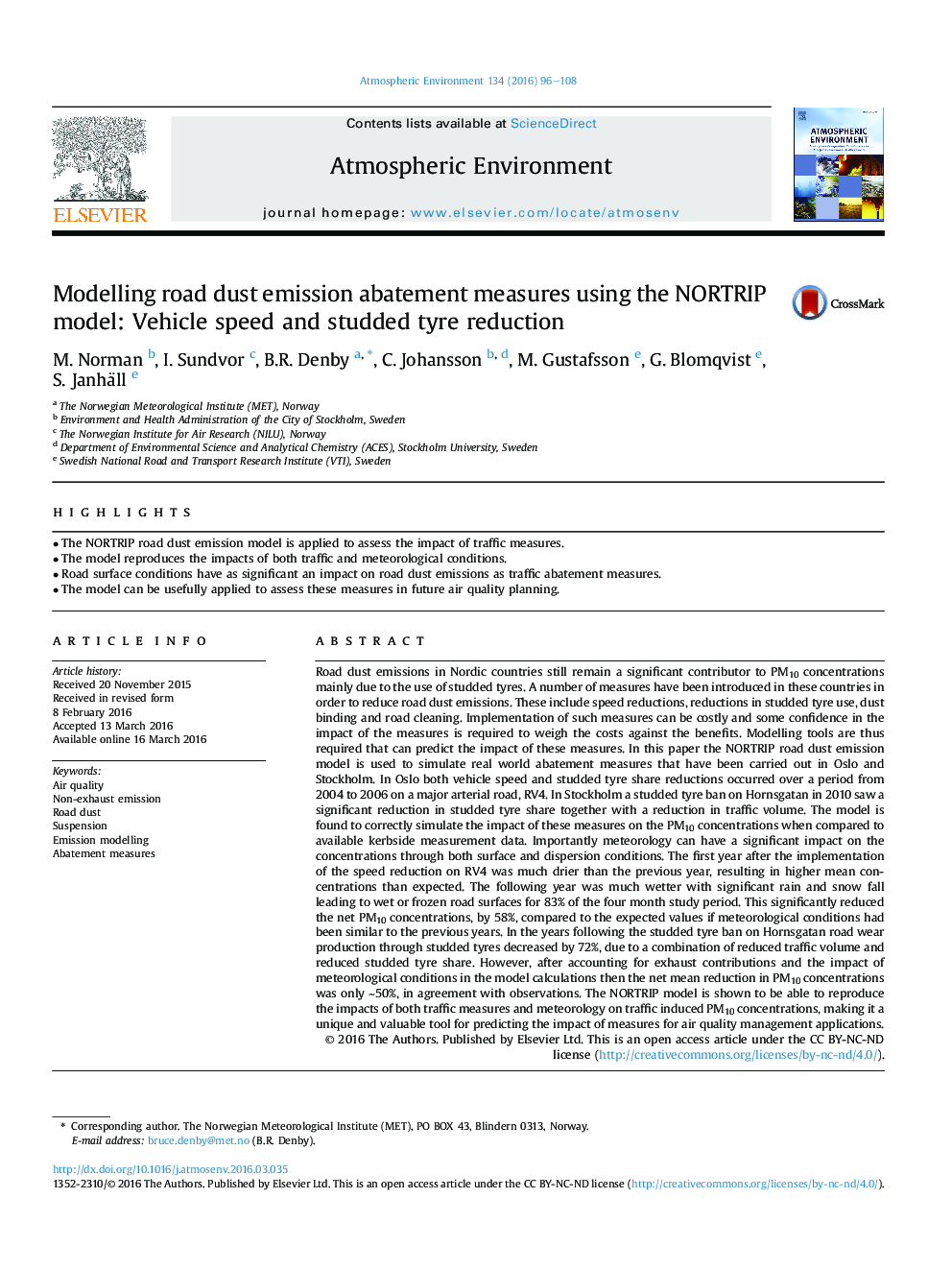| کد مقاله | کد نشریه | سال انتشار | مقاله انگلیسی | نسخه تمام متن |
|---|---|---|---|---|
| 6336583 | 1620340 | 2016 | 13 صفحه PDF | دانلود رایگان |
عنوان انگلیسی مقاله ISI
Modelling road dust emission abatement measures using the NORTRIP model: Vehicle speed and studded tyre reduction
دانلود مقاله + سفارش ترجمه
دانلود مقاله ISI انگلیسی
رایگان برای ایرانیان
کلمات کلیدی
موضوعات مرتبط
مهندسی و علوم پایه
علوم زمین و سیارات
علم هواشناسی
پیش نمایش صفحه اول مقاله

چکیده انگلیسی
Road dust emissions in Nordic countries still remain a significant contributor to PM10 concentrations mainly due to the use of studded tyres. A number of measures have been introduced in these countries in order to reduce road dust emissions. These include speed reductions, reductions in studded tyre use, dust binding and road cleaning. Implementation of such measures can be costly and some confidence in the impact of the measures is required to weigh the costs against the benefits. Modelling tools are thus required that can predict the impact of these measures. In this paper the NORTRIP road dust emission model is used to simulate real world abatement measures that have been carried out in Oslo and Stockholm. In Oslo both vehicle speed and studded tyre share reductions occurred over a period from 2004 to 2006 on a major arterial road, RV4. In Stockholm a studded tyre ban on Hornsgatan in 2010 saw a significant reduction in studded tyre share together with a reduction in traffic volume. The model is found to correctly simulate the impact of these measures on the PM10 concentrations when compared to available kerbside measurement data. Importantly meteorology can have a significant impact on the concentrations through both surface and dispersion conditions. The first year after the implementation of the speed reduction on RV4 was much drier than the previous year, resulting in higher mean concentrations than expected. The following year was much wetter with significant rain and snow fall leading to wet or frozen road surfaces for 83% of the four month study period. This significantly reduced the net PM10 concentrations, by 58%, compared to the expected values if meteorological conditions had been similar to the previous years. In the years following the studded tyre ban on Hornsgatan road wear production through studded tyres decreased by 72%, due to a combination of reduced traffic volume and reduced studded tyre share. However, after accounting for exhaust contributions and the impact of meteorological conditions in the model calculations then the net mean reduction in PM10 concentrations was only â¼50%, in agreement with observations. The NORTRIP model is shown to be able to reproduce the impacts of both traffic measures and meteorology on traffic induced PM10 concentrations, making it a unique and valuable tool for predicting the impact of measures for air quality management applications.
ناشر
Database: Elsevier - ScienceDirect (ساینس دایرکت)
Journal: Atmospheric Environment - Volume 134, June 2016, Pages 96-108
Journal: Atmospheric Environment - Volume 134, June 2016, Pages 96-108
نویسندگان
M. Norman, I. Sundvor, B.R. Denby, C. Johansson, M. Gustafsson, G. Blomqvist, S. Janhäll,